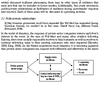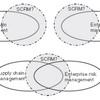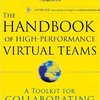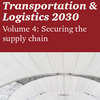 Can public-private partnerships improve community resilience? This question is posed in Leveraging public-private partnerships to improve community resilience in times of disaster, written in 2009 by Geoffrey Stewart, Ramesh Kolluru and Mark Smith, three researchers from the National Incident Management Systems and Advanced Technologies Institute (NIMSAT). The answer: In order to achieve community resilience public and private owners of critical infrastructures and key resources must work together, before, during and after a disaster.
Can public-private partnerships improve community resilience? This question is posed in Leveraging public-private partnerships to improve community resilience in times of disaster, written in 2009 by Geoffrey Stewart, Ramesh Kolluru and Mark Smith, three researchers from the National Incident Management Systems and Advanced Technologies Institute (NIMSAT). The answer: In order to achieve community resilience public and private owners of critical infrastructures and key resources must work together, before, during and after a disaster.
Interdependence
The social and economic networks that exist in any community will ultimately influence the ability of this community to adapt to and respond to the consequences of disasters. This includes both private and public entities.

The key issue is to recognize and embrace the public-private interfaces that can improve the ability of a community to manage the response and recovery phases of disaster management.
Conceptualized as a dependent variable, community resilience is influenced by the relationships government (public) agencies develop with private sector partners and the resilience of relevant supply chains and critical infrastructures/key resources which exist in their communities.
Why is this important? Because much of the critical infrastructure necessary for a disaster response is in private, not in public hands. This will of course depend on which country that is struck by a disaster, but in much of Europe and particularly in the US, it is true.
Propositions
The authors set up a list of propositions
- Stronger public-private partnerships will positively influence the capability of participating critical infrastructure and key resource operators to manage disaster consequences.
- Stronger public-private partnerships will positively influence the capability of participating supply chain operators to manage disaster consequences.
- Improvements in the resilience of critical infrastructures and key resources will positively improve supply chain resilience.
- Improvements in the resilience of supply chains will positively improve the resilience of critical infrastructures and key resources.
- Through improved access to resources, supply chain resilience will positively influence the capability of communities to manage the consequences of disasters.
- Through improved access to resources, the resilience of critical infrastructures and key resources will positively influence the capability of communities to manage the consequences of disasters.
and underpin each proposition with a wealth of examples and a selection of relevant literature.
Managerial implications
The authors also evaluate how resilience can and should be developed.
1. Resilience needs to take center stage:
Failure to recognize the role of resilience could compound post-disaster consequences by relying on managers and public policy officials who who are not capable of adapting the most well-intended plans into strategies which are appropriate for the given situation.
2. Don’t forget the mortality rate of businesses following a disaster:
At each level of government, measures must be taken to influence the preparedness of businesses.
3. Identify important supply chains and critical infrastructures and key resources:
Starting at the lowest level, it is important to understand the position and relative importance of the assets of a community, both on a local, regional and national level.
4. Establish appropriate relationships with specific business/industries:
First, understand how specific businesses and government agencies work, then develop working relationships in order to discuss the remedies that can contribute to improving resilience.
The essence: In order to achieve community resilience, public and private owners of critical infrastructures and key resources must work together, before, during and after a disaster.
Critique
This is one of the better articles on resilience that I have seen in the long time, but there is one shortcoming, in my opinion. While the authors describe and discuss various aspects of the concept of resilience, I find it surprising that they missed the New Zealand research project Resilient Organisations, that deals in particular with community resilience. Instead they appear to have a penchant for Sheffi’s concepts of resilience, which, by the way, are brilliant, so there’s nothing wrong with that. Moreover, they do cite a wide range of literature, many of which hitherto unbeknown to me, so I do have a lot of reading ahead of me, and that alone makes this article worth reading.
NIMSAT
NIMSAT is a research center established under the auspices of the University of Louisiana at Lafayette and that was conceived based on the experiences of the Institute’s researchers during the devastations of hurricanes Katrina and Rita in 2005. The mission of NIMSAT is to enhance national resiliency to a full range of potential disasters by conducting research leading to innovative tools and applications that empower the homeland security and emergency management community through education, training, outreach and operational support.
Reference
Stewart, G., Kolluru, R., & Smith, M. (2009). Leveraging public-private partnerships to improve community resilience in times of disaster. International Journal of Physical Distribution & Logistics Management, 39 (5), 343-364 DOI: 10.1108/09600030910973724
Author links
- louisiana.edu: Geoffrey T Stewart
- linkedin.com: Ramesh Kolluru
- nimsat.org: Mark Smith
Links
- nimsat.org: NIMSAT
- resorgs.org.nz: Resilient Organisations
Related
- husdal.com: Disasters- Prepare or react?
- husdal.com: Economic Resilience












